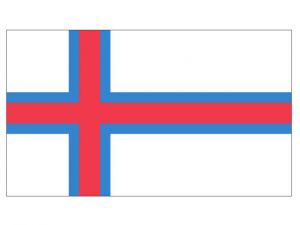Language/Faroese/Grammar/Plurals
Hi Faroese learners! 😊
In this lesson, we will dive into the plural forms in Faroese. As you may already know, nouns are words that are used to name people, places, things, and ideas. In Faroese, as in many other languages, pluralization is the process of changing the form of a word to indicate that it refers to more than one object or person.
Plurals are a fundamental part of any language so learning how to use them correctly is important. We will learn about three types of pluralization in Faroese. So, let's get started!
With the completion of this lesson, consider investigating these related pages: Adjectives, Questions, Negation & Conditional Mood.
Regular plurals[edit | edit source]
The regular way of pluralizing a noun in Faroese is by adding an "-ir" to the end of the word.
| Faroese | Pronunciation | English |
|---|---|---|
| hus (“house”) | [hʉs, hys] | houses |
| stólin (“chair”) | [stɔlɪn] | chairs |
| fuglur (“bird”) | [fʊklʊɹ] | birds |
As you can see in the examples above, when a noun ends with a consonant, it is enough to add "-ir" to form the plural. However, when a noun ends with a vowel, it is necessary to insert "-n" between the word and "-ir."
| Faroese | Pronunciation | English |
|---|---|---|
| bók (“book”) | [bɔgk] | books |
| skúla (“school”) | [skʉːla] | schools |
Just like in any other language, there are some irregular nouns which have special plural forms, and we will look at those now.
Irregular plurals[edit | edit source]
One of the most common irregular plural forms is when the noun ending is changed. Below are some examples:
| Faroese | Pronunciation | English |
|---|---|---|
| maður (“man”) | [maðʉɹ] | menn (“men”) |
| kona (“woman”) | [kʊna] | kvinnur (“women”) |
| barn (“child”) | [baɹn] | børn (“children”) |
As you can see in the examples above, the noun ending changes to indicate the plural form.
The other irregularity in the plural form include nouns that have a completely different form when pluralized:
| Faroese | Pronunciation | English |
|---|---|---|
| fé (“sheep”) | [fɛ] | fýr (“sheep”) |
| fiskur (“fish”) | [fɪskʊɹ] | fiskar (“fish”) |
In these examples, you cannot predict the plural form by rules, and you will have to learn it by heart. However, don't worry if you are struggling. Pluralization in Faroese is fairly regular compared to many other languages.
Dealing with compound nouns[edit | edit source]
In Faroese, it is very common to form compound words by combining two or more words. This often produces very long words. It is important to know that when you pluralize a compound noun, only the last word in the compound is pluralized.
| Faroese | Pronunciation | English |
|---|---|---|
| vindeyga (“eyelash”) | [vindeɪɡa] | vindeygur (“eyelashes”) |
| ferðamannaløkka (“suitcase”) | [feɹðamaɳalœka] | ferðamannaløkkur (“suitcases”) |
As shown in the examples above, only the last word in a compound noun will change to its plural form.
Dialogue[edit | edit source]
Let's practice plurals in a dialogue!
- Person 1: Eg havi eitt heim. (“I have a home.”)
- Person 2: Eg havi tvey heimar. (“I have two homes.”)
- Person 1: Eg fari til tíðindablaðið. (“I’m going to the newspaper.”)
- Person 2: Hesir eru trý tíðindablaðir. (“These are three newspapers.”)
- Person 1: Eg ynski mær eitt stykki av tómati. (“I would like a piece of tomato.”)
- Person 2: Eg kann tvey stykki av tómatum givið teg. (“I can give you two pieces of tomato.”)
Practice[edit | edit source]
To practice, you can make a list of nouns and their plural forms. You can also try to translate English sentences into Faroese with the appropriate plural forms. Remember to use native speakers as a resource and ask them any questions you may have.
Sources[edit | edit source]
➡ If you have any questions, please ask them in the comments section below.
➡ Feel free to edit this wiki page if you think it can be improved. 😎

